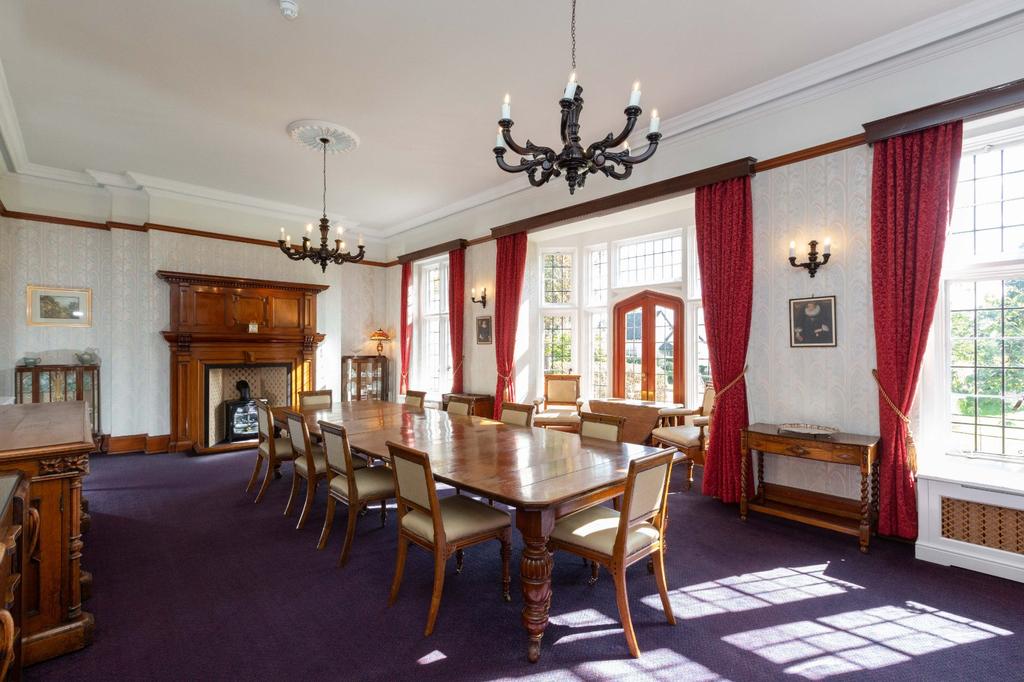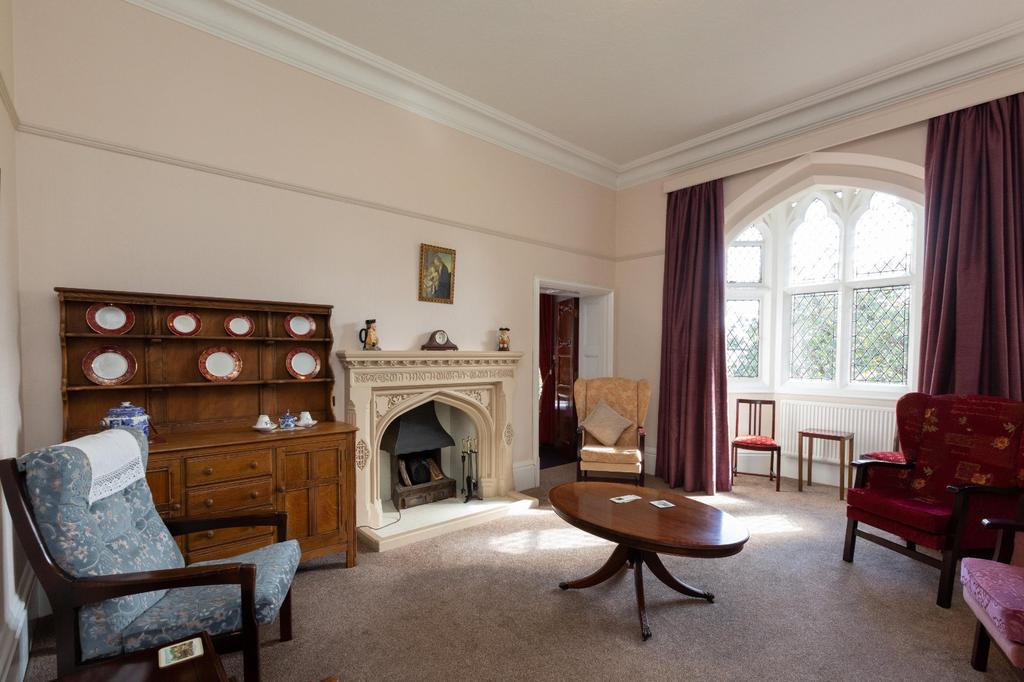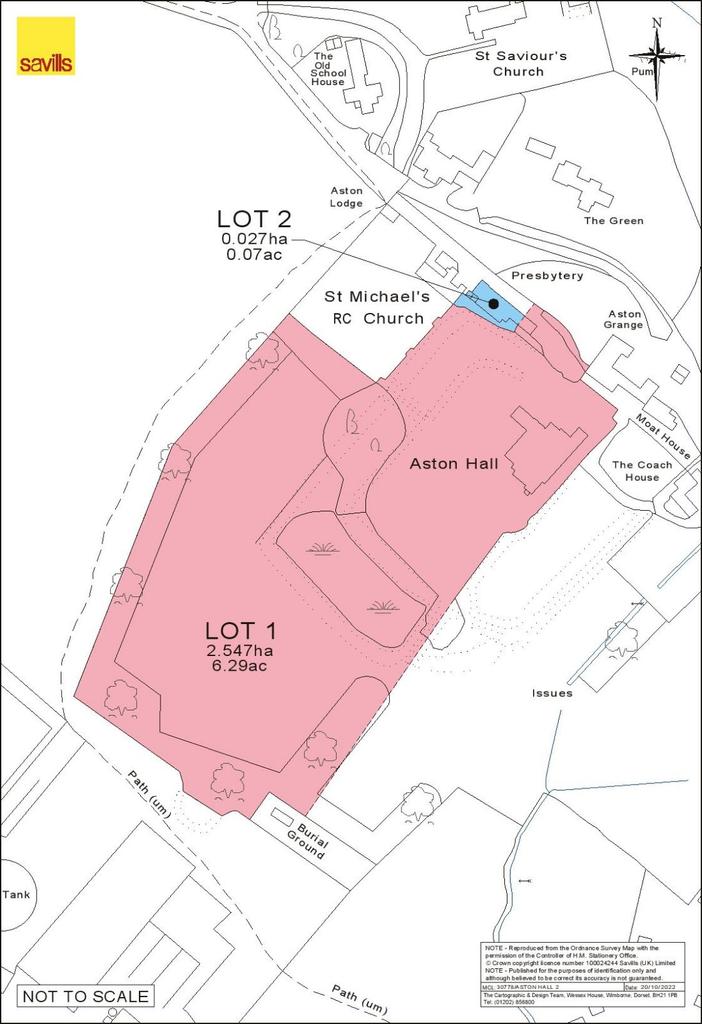No longer on the market
This property is no longer on the market
11 bedroom detached house
Premium display
Study
Under offer
Detached house
11 beds
7 baths
6.29 acre(s)
EPC rating: F
Key information
Tenure: Freehold
Service charge: £0 per annum
Council tax: Band H
Broadband: Ultra-fast 1000Mbps *
Mobile signal:
EEO2ThreeVodafone
Features and description
- Tenure: Freehold
- Grade II listed property designed as a private house by Edward Welby Pugin.
- Wonderful vista's from all the main rooms.
- Spectacular gardens and grounds.
- Conveniently situated 7 miles north of Stafford offering outstanding communication
- Access to the M6 motorway and the West Coast mainline at Stafford.
- There is an additional property (The Presbytery) available adjacent to the hall at an asking price of £500,000
- EPC Rating = F
An elegant Grade II country house set in beautiful gardens and grounds. There is an additional property (The Presbytery) available separately with an asking price of £500,000
Description
Aston Hall is a Grade II listed property designed as a private house by Edward Welby Pugin in 1855 for Father Edward Huddleston, incorporating an earlier wing and material from
a convent.
The site is ancient with a large moat (now dry). In the sixteenth century the property passed to the Heveningham family and from them to the Simeon family. In about 1757 Sir James Simeon built a family mausoleum (excluded) to the south west of the moat which survives (Grade II). The estate passed to the Roman Catholic Weld family who commissioned a design from John Tasker in about 1798. This house was given to the English Franciscans to serve as a noviciate and Bridgettine nuns were in residence from 1829 to 1837. In 1838 the bones of St Chad were discovered under the altar in the Hall chapel, having been brought to Aston Hall for safe keeping from Lichfield Cathedral during the Reformation. In 1842 Dominic Barberi arrived from Italy and founded a Passionist noviciate at the Hall. A small convent and chapel with a courtyard plan was designed and built for him by C F Hansom in 1847 to 1849. Barberi was responsible for receiving John Henry Newman into the Catholic Church in 1845 and was himself beatified in 1963.
Following Barberi‘s death in 1849 the Passionists gave up the mission and the site was bought in 1855 by The Reverend Canon Edward Huddleston who employed EW Pugin to rebuild
the Hall. It was one of his first independent commissions following the death of his father, AWN Pugin. This, the present Aston Hall, appears to include an earlier range which
may have formed part of Hansom’s convent buildings. It was also extended in 1912 when the present dining room was built on the site of a former conservatory. Hansom’s convent building was built over the present church which was built to the north west of the moat. It is believed that the salvaged features from the earlier convent were re-used in the new Catholic parish church and formed part of the rear wing of Pugin’s house of 1855.
From 1959 the house has been owned by the Birmingham Roman Catholic Diocese and used as a home for retired and convalescent priests.
Whilst Aston Hall has, in recent years, been a home for retired priests, it could easily be reconfigured to provide a most wonderful private family home.
Planning permission will be required if the property returns to a private dwelling or for an alternative use. There is a detailed floor plan in the brochure.
A long passage leads through the front door with the dining room, a sitting room, the Chapel of Blessed Dominic Barberi and study to the right and two further sitting rooms to the left.
The substantial commercial kitchen with pantry off. Beyond are a series of utility rooms and the private study.
On the first floor suite of rooms has been created which includes a sitting room, four bedrooms and a bathroom. In addition, there are four further bedrooms, all
with en suite wet rooms. The first floor could be reconfigured in a number of ways.
The second floor is laid out with three further bedrooms with en suite wet rooms. There is a lift which comes from the ground floor to both floors, and as a single entirety.
Gardens and Grounds
The gardens and grounds are absolutely spectacular and exquisitely beautiful.
All the main rooms in Aston Hall provide wonderful vistas over the gardens with an abundance of mature trees including copper beech, weeping willow, acacia, yew and sycamore.
The initial focal point of the garden is the circular topiary garden with a central statue, believed to be of a heron, and a fountain.
The Presbytery (for sale as a separate lot, guide price: £500,000)
The Presbytery is a two-storey building now converted into five studio apartments recently used as retirement and respite accommodation for priests.
It is envisaged that the presbytery would be redeveloped either as a private house or into separate flats.
Location
Aston Hall is conveniently situated 7 miles north of Stafford offering outstanding communication access to the M6 motorway (8 miles) and the BR West Coast mainline at Stafford (7 miles). Trains from Stafford to London take about 1 hour 20 minutes. International airports at Birmingham, Manchester and Liverpool are all within distance. There are a number of excellent schools, both in the private and state sector, within easy reach of Aston Hall.
Square Footage: 9,210 sq ft
Acreage: 6.29 Acres
Directions
From Stafford take the A34 north for 7 miles. Turn right into Church Lane and bear right. Aston Hall is found on the right.
From Stone take the A34 south for about a mile. At the second roundabout continue on the A34 signed Stafford. After about 250 yards turn left into Church Lane. Bear right and Aston Hall is found on the right.
There is a circular gravel sweep in front of the house but proceed to the right towards the garden where you will find the front door.
Additional Info
Aston Hall is a Grade II listed building dating back to the nineteenth century. It should be noted that the listing was only imposed in 2015/2016, therefore a number of the double-glazed plastic windows in the kitchen were in situ before the listing. The property lies within open countryside and the Cannock Chase Special Area of Conservation whilst also being identified as an area with an historic environmental record.
Aston Hall has been used for residential care for clergymen. It should be noted that a change of use will be required to allow residential use.
It is understood that the lawful use of the premises is C2 “Residential institution” which includes residential care homes and nursing homes. There is a planning brief available on request from the vendors’ agent.
Description
Aston Hall is a Grade II listed property designed as a private house by Edward Welby Pugin in 1855 for Father Edward Huddleston, incorporating an earlier wing and material from
a convent.
The site is ancient with a large moat (now dry). In the sixteenth century the property passed to the Heveningham family and from them to the Simeon family. In about 1757 Sir James Simeon built a family mausoleum (excluded) to the south west of the moat which survives (Grade II). The estate passed to the Roman Catholic Weld family who commissioned a design from John Tasker in about 1798. This house was given to the English Franciscans to serve as a noviciate and Bridgettine nuns were in residence from 1829 to 1837. In 1838 the bones of St Chad were discovered under the altar in the Hall chapel, having been brought to Aston Hall for safe keeping from Lichfield Cathedral during the Reformation. In 1842 Dominic Barberi arrived from Italy and founded a Passionist noviciate at the Hall. A small convent and chapel with a courtyard plan was designed and built for him by C F Hansom in 1847 to 1849. Barberi was responsible for receiving John Henry Newman into the Catholic Church in 1845 and was himself beatified in 1963.
Following Barberi‘s death in 1849 the Passionists gave up the mission and the site was bought in 1855 by The Reverend Canon Edward Huddleston who employed EW Pugin to rebuild
the Hall. It was one of his first independent commissions following the death of his father, AWN Pugin. This, the present Aston Hall, appears to include an earlier range which
may have formed part of Hansom’s convent buildings. It was also extended in 1912 when the present dining room was built on the site of a former conservatory. Hansom’s convent building was built over the present church which was built to the north west of the moat. It is believed that the salvaged features from the earlier convent were re-used in the new Catholic parish church and formed part of the rear wing of Pugin’s house of 1855.
From 1959 the house has been owned by the Birmingham Roman Catholic Diocese and used as a home for retired and convalescent priests.
Whilst Aston Hall has, in recent years, been a home for retired priests, it could easily be reconfigured to provide a most wonderful private family home.
Planning permission will be required if the property returns to a private dwelling or for an alternative use. There is a detailed floor plan in the brochure.
A long passage leads through the front door with the dining room, a sitting room, the Chapel of Blessed Dominic Barberi and study to the right and two further sitting rooms to the left.
The substantial commercial kitchen with pantry off. Beyond are a series of utility rooms and the private study.
On the first floor suite of rooms has been created which includes a sitting room, four bedrooms and a bathroom. In addition, there are four further bedrooms, all
with en suite wet rooms. The first floor could be reconfigured in a number of ways.
The second floor is laid out with three further bedrooms with en suite wet rooms. There is a lift which comes from the ground floor to both floors, and as a single entirety.
Gardens and Grounds
The gardens and grounds are absolutely spectacular and exquisitely beautiful.
All the main rooms in Aston Hall provide wonderful vistas over the gardens with an abundance of mature trees including copper beech, weeping willow, acacia, yew and sycamore.
The initial focal point of the garden is the circular topiary garden with a central statue, believed to be of a heron, and a fountain.
The Presbytery (for sale as a separate lot, guide price: £500,000)
The Presbytery is a two-storey building now converted into five studio apartments recently used as retirement and respite accommodation for priests.
It is envisaged that the presbytery would be redeveloped either as a private house or into separate flats.
Location
Aston Hall is conveniently situated 7 miles north of Stafford offering outstanding communication access to the M6 motorway (8 miles) and the BR West Coast mainline at Stafford (7 miles). Trains from Stafford to London take about 1 hour 20 minutes. International airports at Birmingham, Manchester and Liverpool are all within distance. There are a number of excellent schools, both in the private and state sector, within easy reach of Aston Hall.
Square Footage: 9,210 sq ft
Acreage: 6.29 Acres
Directions
From Stafford take the A34 north for 7 miles. Turn right into Church Lane and bear right. Aston Hall is found on the right.
From Stone take the A34 south for about a mile. At the second roundabout continue on the A34 signed Stafford. After about 250 yards turn left into Church Lane. Bear right and Aston Hall is found on the right.
There is a circular gravel sweep in front of the house but proceed to the right towards the garden where you will find the front door.
Additional Info
Aston Hall is a Grade II listed building dating back to the nineteenth century. It should be noted that the listing was only imposed in 2015/2016, therefore a number of the double-glazed plastic windows in the kitchen were in situ before the listing. The property lies within open countryside and the Cannock Chase Special Area of Conservation whilst also being identified as an area with an historic environmental record.
Aston Hall has been used for residential care for clergymen. It should be noted that a change of use will be required to allow residential use.
It is understood that the lawful use of the premises is C2 “Residential institution” which includes residential care homes and nursing homes. There is a planning brief available on request from the vendors’ agent.
About this agent

Since 1997 Savills Telford have been providing a best-in-class service with wide-ranging specialist knowledge coupled with local expertise. We have an unparalleled understanding of all aspects of rural and residential property and work together seamlessly with our colleagues in wider property sectors including development, planning and commercial across our national and international Savills network. This provides our clients with an unmatched depth of resources, industry leading research teams, database contacts and expertise. Most visited website Savills.co.uk is the most visited UK national estate agency website, averaging over 2.4 million visits a month in 2020, and recording over 3.1 million visits in January 2021. Global exposure Our site is available in 22 languages including English, Chinese, Spanish and Russian. This guarantees your property will have the global exposure it deserves as well as providing access to more buyers via our website. Put simply, because we get more qualified visits, you get more opportunities to sell.


















